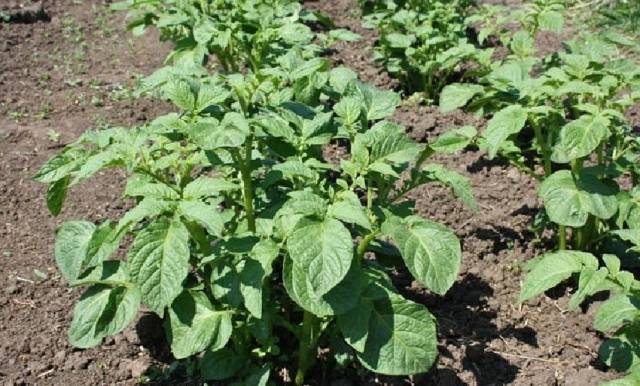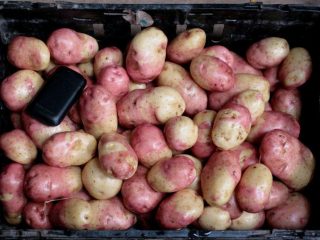Content
Dutch potato varieties are very popular among Russian vegetable growers. Among the early ripening species, it is worth highlighting the Latona potato.
Potatoes have very high quality characteristics, so it’s worth taking a closer look at their properties.
Origin story
The originator of the variety is HZPC-Holland. Breeders bred it in the middle of the 20th century, and in 1996 “Latona” was included in the State Register of Russia. Scientists recommend this potato variety for cultivation in central Russia, as well as in Belarus, Moldova and Ukraine.
Description and characteristics
The main characteristics of “Latona” that potato growers pay attention to are the ripening period and yield of the variety. However, other parameters are also important for proper cultivation of the crop.
Characteristic | Description |
Purpose of the Latona variety | Dining room. 96% of the harvest remains marketable. |
Ripening period | Early. Harvest 75 days after planting. The first digging can be done after 45 days. |
Appearance of the bush | Tall, erect, curvy. The foliage of the stems is good, so the variety does not suffer from drying out soil. |
Flowers | The corollas are white, the number of flowers on the bush is average. There may be a lack of flowers, which does not affect the yield. |
Leaves | The leaves are dark green, large. The tops are lush and dense, this characteristic makes it possible to water the bushes moderately. |
Tubers | Round-oval shape, smooth. The peel is yellow, the flesh is light yellow. The peel is delicate and can be easily separated if harvested in a timely manner. Tubers overexposed in the ground have a rough skin. The weight of one fruit ranges from 90 to 140 grams. Quantity in a bush – 15 pieces. |
Productivity | From one bush 2.5 kg. When grown in fields it is 45 c/ha. |
Resistance to diseases and crop pests | Latona potatoes are not affected by tuber blight, cancer, dry rot and do not suffer from damage from the golden potato nematode. |
Advantages and disadvantages
The pros and cons of Latona potatoes are well covered in reviews from vegetable growers. Based on the experience of potato growers, a visual table can be drawn up.
Advantages | Flaws |
Potato resistance to mechanical damage, ability for mechanical planting, maintenance and harvesting. | The variety is affected by scab. |
Short growing season. | If harvested untimely, the skin on the tubers becomes very rough. |
Ability for long-term transportation. |
|
Good tuber growth throughout the season due to the gradual death of the tops. |
|
Resistance of the Latona variety to weather changes |
|
High shelf life, the yield during storage is preserved by 97%. |
|
Landing
To get a high yield, Latona potatoes are planted taking into account the requirements of crop rotation. The variety grows well after cabbage, legumes, root vegetables and pumpkins. But tomatoes or peppers are undesirable predecessors.
There are three main ways to plant potatoes:
- trench;
- ridge;
- smooth.
All three are equally suitable for the Latona variety. Gardeners choose which way to plant Latona depending on the climate and soil composition.
- The trench method involves digging trenches into which prepared potato tubers are then laid out. The depth of each trench is 15 cm, and the distance between adjacent trenches is 70 cm. Seed potatoes are placed at a distance of 35-40 cm from each other, then sprinkled with soil. The method is ideal for sandy, light soil that does not retain moisture and for regions with warm climates.
- The smooth planting method is best known to amateur potato growers. In this case, a layer of earth is raised, potatoes are laid with their sprouts facing up and sprinkled with soil. This solution is suitable for areas where there is no stagnant water and good lighting. A distance of 70 cm is maintained between the Latona tubers and they are planted in a checkerboard pattern in two rows. Planting depth – 10 cm.
- Option ridge planting chosen for heavy soil with excess moisture. The earth is raised to a height of 15 cm in the form of a mound. The optimal distance between ridges is 70 cm, between potato bushes 30 cm.
Pre-planting preparation of tubers is required - germination, treatment against pests and diseases. For processing, gardeners use preparations such as Albit or Maxim. The product is used according to the instructions.
If such a danger exists, it is necessary to provide for the possibility of drainage of the site.
At the time of digging, manure, humus, and mineral fertilizers are added.
For Latona potatoes, the best planting time is early May. The ridges are located from north to south.
Care
After planting, standard care measures are provided for potato beds. The Latona variety responds very gratefully to the careful fulfillment of agrotechnical requirements. If you pay enough attention to it, the yield rises to its maximum level. The most basic stages of caring for Latona potatoes are watering, loosening, hilling, fertilizing, and prevention from pests and diseases.
Watering most useful at the time of bud formation and flowering of bushes. The rest of the time, potatoes do not require regular moisture. For the variety, drip irrigation and sprinkling are used.
Weeding beds. A necessary event for potatoes. The beds are weeded for the first time a week after planting.
Fertilizing is combined with watering.
Preventative measures to prevent the occurrence of diseases and pests should be done regularly. Potatoes of the “Latona” variety should be protected from the invasion of the Colorado potato beetle, which can cause great damage to plantings.
Hilling and feeding
Gardeners do not have the same opinion regarding the hilling of the Latona variety. But the climatic conditions and soil composition on the site should be taken into account. When potatoes are hilled inside the nest, the temperature increases. When it reaches +20°C, tuberization slows down. Therefore, some consider this procedure unnecessary. But hilling is necessary to protect the potatoes from possible cold snap, accumulation of moisture and stimulating the growth of tops. This significantly increases productivity. The first time Latona potatoes need to be hilled when sprouts appear. Then after watering or rain. It is important to carry out hilling before flowering.
It is best to feed the potato variety with mixed fertilizers.For potatoes, you need to alternate mineral and organic nutrition.
How to feed Latona potatoes:
- When planting, add 1 tbsp. a spoonful of nitrophoska in each well.
- At the moment of green mass collection, add semi-liquid mullein or a composition of 1 tbsp. spoons of urea in a bucket of water. 0.5 liters of any fertilizer is enough.
- During the budding period, it is necessary to feed the potato bushes with potassium. Wood ash (3 tbsp) and potassium sulfate (1 tbsp) in a bucket of water are suitable.
- In the flowering phase, granular superphosphate is used.
Diseases and pests
The variety is classified as disease-resistant, but it is not recommended to neglect preventive treatments. You need to start with preventive treatment of tubers before sowing.
Name of pest or disease | Control and prevention measures |
Late blight, alternaria | Spraying with Metaxil. The frequency of treatments is once every 14 days. Spraying with garlic infusion |
Wireworm | Repellent by the smell of planted mustard, legumes or calendula. |
Colorado beetle | Dusting with ash, mulching with onion peels |
Harvesting
Early varieties, which include “Latona,” begin to be harvested in early July. Although the period may shift depending on the growing region. The harvested crop is laid out on a ridge.
At the same time, the most productive bushes are determined and the tubers are left for seed. A few hours after drying, the potatoes are prepared for storage. Only healthy, undamaged tubers are selected. The rest are placed separately for quick consumption.
Before planting, “Latona” potatoes are treated (sprayed) with copper sulfate (2 g per bucket of water). This technique increases shelf life.
The maximum temperature for storing Latona potatoes is +5°C, humidity 90% and no light.
Conclusion
Latona potatoes are a very popular variety, although they are considered a novelty. Fulfilling the requirements of agricultural technology is the key to an excellent harvest and healthy crop. “Latona”, if well cared for, does not get sick and shows good results at the end of the season. Reviews from gardeners fully confirm the above.














